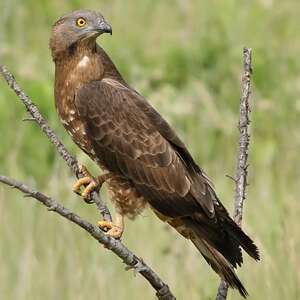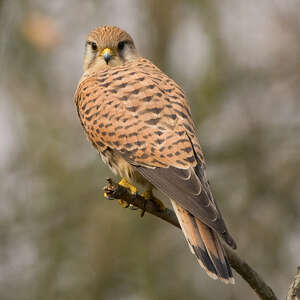Manon Q S Page
Your project was interesting (and quite unusual), with hardly any mistakes !! in the texts. However, you should have made it more "personal". I know you carried out some research to do the work on this page but your texts should be entirely written by yourself and not "taken" directly from some website or written by someone who speaks perfect English !
Your mark is 13/20
Hello, my name is Manon. I have a passion. This passion are the is raptors. I would like to share with you this passion by talking to you a little bit of about these wonderful winged creatures.
The raptors
Raptors are birds said to be " of prey". They are recognizable by their hooked beaks and their powerful talons (the claws of raptors). They are also characterized by an excellent view and a very good sense of smell. They are divided into 2 groups: diurnal raptors (divided into two orders: Falconiformes and Accipitriformes) which live by day and nocturnal also called Strigiformes which live by night. They all have different habitats, hunting techniques and diets. For example, European Honey Buzzard (Pernis apivorus) is insectivorous, unlike the Osprey (Pandion haliaetus) which mainly consumes fish. Raptors generally lay eggs in spring, but it depends on the species. Some generally migrate to Africa in winter and others are sedentary like the European hawk (Accipiter nisus). You should know that females are almost always larger than males and that they often have a different attribute from males. The Kestrel (Falco tinnunculus) male has a gray head and tail while the female has female's are brown.

In France
The Western Palearctic (Europe, North Africa and the Middle East) has 46 nesting raptor species, among which 34 Accipitriformes and 12 Falconiformes. France is one of the European countries which are home to the most species of nesting raptors (24 of the 38 species of European diurnal raptors, or two thirds, nest in France). In France, all species of raptors have been protected since 1972. Before, they were hunted because they threatened certain activities such as hunting and breeding. Today, they are in danger because of the pesticides and the degradations which their habitats undergo. This is why there are associations such as the LPO (Ligue pour la Protection des Oiseaux) which wishes to protect birds and biodiversity.
In red the Western Paleartic

The birds on the logo are puffins
The falconry
Falconry involves raising and training raptors for hunting. It dates back to Antiquity, notably from Eurasia. The art of falconry was much appreciated by kings who went hunting with, for example Louis XIII. Today, raptors are "used" for other activities. They are trained by falconers to make shows, for hunting or even to repel certain pests such as pigeons, this is called scaring. Falconry is very regulated. There is also an association of falconers in France, the ANFA (Association Nationale des Fauconniers et Autoursiers Français). If you are interested in falconry it is possible to do internships.Some notions
Harris's Hawks (Parabuteo unicinctus) can live in groups which is normally very rare in raptors.Barn Owls (Tyto alba) are white but it can happen that there are black ones which are generally neglected or killed by their parents

The largest raptor is the Andean Condor (Vultur gryphus), its wingspan reaching 3.50 m.
The fastest raptor is the Peregrine Falcon (Falco peregrinus), it can reach a speed of around 360km/h in dive.
Ne pas supprimer SVP
Comments -
Add a New Comment
page revision: 14, last edited: 24 Apr 2020 19:12






